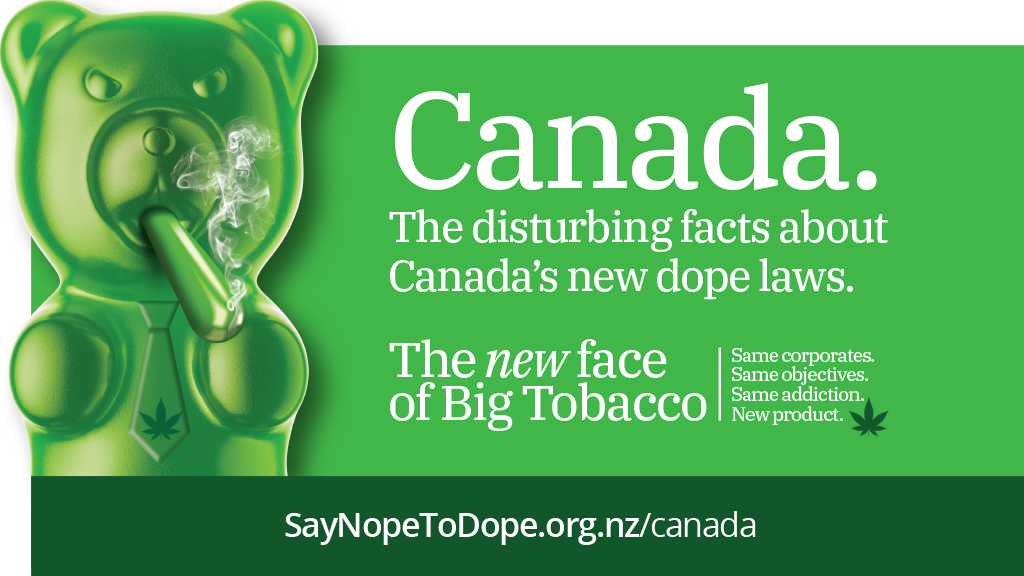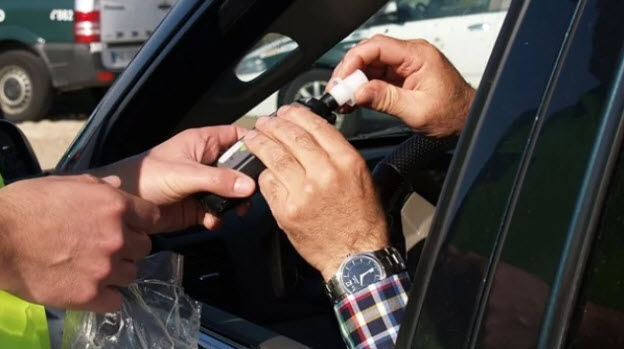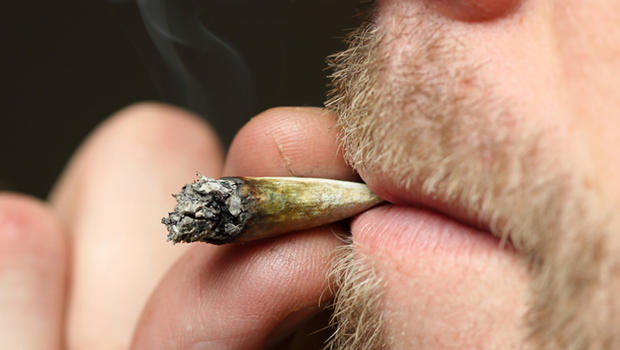
The Guardian 5 April 2020
Family First Comment: An accurate assessment – and a warning for NZ:
* Growers have gone bust, and the black market is still thriving.
* Statistics Canada, a state agency, reports that just 29% of cannabis users buy all of their product from a legal source.
* price was almost double that of illegal market. C$5.59 to C$10.23 per gram. That was caused by tax burdens & overheads: legal market has to comply with regulations on fungicide & pesticide residue levels, & draconian security requirements for grow sites
* “Why would anyone drive a few miles up the road to score bad weed from many of the government shops when your regular black-market dealer lives nearby, has better product and brings it to your door for half the price?”
Canada had permitted cannabis for medical use since 2001. Medical patients were allowed to grow four plants, and licensed producers cultivated larger crops for sale online to those with valid prescriptions. But most Canadian cities had illegal – but tolerated – dispensaries where the drug was sold completely indiscriminately. These stores made Amsterdam’s coffee shops look as prim as a WI cake stand. The quality and variety of cannabis on sale at these illegal outlets was outstanding, bewildering. Business was not just booming, but blazing.And it was all completely illegal.
Canada’s Cannabis Act of 2018 was a bold attempt to impose some order on this anarchic retail scene. It legalised the sale to adults of 30g of cannabis in austere packaging from government-licensed shops. Canadian prime minister Justin Trudeau said: “The old approach to cannabis didn’t work. It was too easy for our kids to get it and gangs and drug dealers were reaping the profits. That changes from now on.”
Bill Blair, a former Toronto police chief, became an unlikely cheerleader for legalisation, arguing that to do so would “keep cannabis out of the hands of youth, and profits out of the hands of criminals”. Two other key goals of regulation were the protection of public health and the reduction in criminality associated with the illegal market. After 50 years of the unending, senseless drug war, peace had broken out.
Or so it seemed. Because while Canada may have lit the fuse on an ambitious experiment, every high has a low. Within a year the industry was experiencing mass layoffs, multi-billion-dollar stock-market losses, executive firings and corporate scandals as the overhyped new sector experienced a dramatic and humbling public correction.
What went wrong? Alastair Moore, co-founder of Hanway Associates, a London-based cannabis consultancy, says the Canadian industry has been driven by vulture capitalism and wishful thinking. “A mix of greed and naivety led this industry to great heights – and has left it on its knees. While some made lots of money, others lost their investments and now many others have lost their jobs.”
According to Moore’s fellow founder, George McBride: “The key thing is that Canada did actually get the reforms through. In and of itself, that is a huge feat. It’s the first time any major developed country has done so. And so, kudos. However, getting it through has involved a lot of politicians who didn’t understand what they’re talking about designing a really complicated system.”
So just how does a state create and regulate an entirely new business of intoxication that has always existed, essentially, in a countercultural, outlaw space? Canada, it turns out, did so cautiously, with every decision deliberated over by a centralised government Task Force.
Added to the complexity of the policy and its implementation, the needle of international capital’s wonky moral compass swung straight at these lucrative new markets. Hundreds of millions of dollars were raised on global capital markets and the Canadian landscape was quickly dotted with massive new grow sites.
The so-called “green rush” had started and production went into overdrive. Stock prices soared and fortunes were staked, made, doubled and tripled in an atmosphere reminiscent of the 90s dotcom boom, or the Yukon gold rush of the 19th century, when 100,000 prospectors headed into the Canadian hinterlands in search of riches. Many firms hoped to corner the Canadian market by throwing millions of dollars of shareholders’ money into massive grow sites. This time, the gold was green. But soon, things started to fall apart.
The main problem Canada’s smokers and growers faced was access: too few retail shops were able to open to serve the eager new market. Canada is a country of 38 million people, divided into 10 provinces that are similar to US states, with provincial governments producing a patchwork of varying regulations. Over a third – 13.5 million – of all Canadians live in the state of Ontario. But as of 2 March this year, Ontario had just 41 retail cannabis stores. The province of Alberta, home to 4.4 million, has 423 stores.
And where there was product available, the price was almost double that of the illegal market. C$5.59 to C$10.23 per gram (or over £40 a quarter ounce). That was caused by tax burdens and overheads: the legal market has to comply with regulations on fungicide and pesticide residue levels, and draconian security requirements for grow sites, such as huge vaults in which to store the cannabis and record-keeping for every person who enters these vaults.
The illegal market, meanwhile, is completely unregulated – and thriving because of this. Statistics Canada, a state agency, reports that just 29% of cannabis users buy all of their product from a legal source. Four in 10 Canadians told the organisation that they bought at least some cannabis from illegal sources in 2019.
The next problem was that many stores sold poor-quality grass, with smokers complaining that it had been poorly dried and cured, and tasted bad. Modern cannabis users are accustomed to a range of flavours, from lemon to mango, pineapple, strawberry and pine. These flavours are derived from the plant’s natural aroma profile, which skilled growers preserve by careful breeding, correct harvesting and slow, cautious curing of the fragrant flowers.
Many players in the new mass market often skipped these steps in the pursuit of profit, says David Brown, a British Columbia-based cannabis industry analyst. “Many consumers have had complaints about high prices and what is perceived as lower quality, especially the tendency of many of the legal dried flower products to be overly dried, often from a rushed or improper curing and drying process.”
Why would anyone drive a few miles up the road to score bad weed from many of the government shops when your regular black-market dealer lives nearby, has better product and brings it to your door for half the price?
It’s worth reflecting, also, on the psychology of some of these users. “For a long time, cannabis has been the mark of the rebel, the outsider, the outlaw,” says Brown. “A lot of the people who complain about ‘bad weed’ and so-called ‘fake legalisation’ are doing so because parts of their countercultural identity have been altered forever by this law change. Canada has made cannabis boring – and that was kind of the point.”
With few shops to sell to and customers clinging to their traditional dealers, the new cannabis corporations found themselves holding a glut of product. There is a stockpile of grass weighing in at 400 tonnes, at last count, according to official government inventory figures.
The rollout of retail shops was left, in many cases, to inexperienced officials in provincial government departments, says McBride. “Ontario authorities said, ‘We don’t trust private organisations to run cannabis shops. We’re going to do it all ourselves.’ Then they tried to do it, but they squandered about $80 million trying to figure out how to do it, and got absolutely nowhere. They had to cancel it and invite private tenders. All these big, shiny grow facilities that cost C$10m, C$20m or C$30m to build, and which all grew loads of cannabis – there was nowhere to sell it, because there weren’t any shops,” he says.
In a stinging irony, medical patients – the very people whose decades of activism had driven the wider reforms, faced cannabis shortages and a steep increase in price after legalisation as suppliers diverted their medical product in bulk to the new recreational market rather than in hundreds of smaller deals to medical patients.
READ MORE: https://www.theguardian.com/society/2020/apr/05/stoners-cheered-when-canada-legalised-cannabis-how-did-it-all-go-wrong













